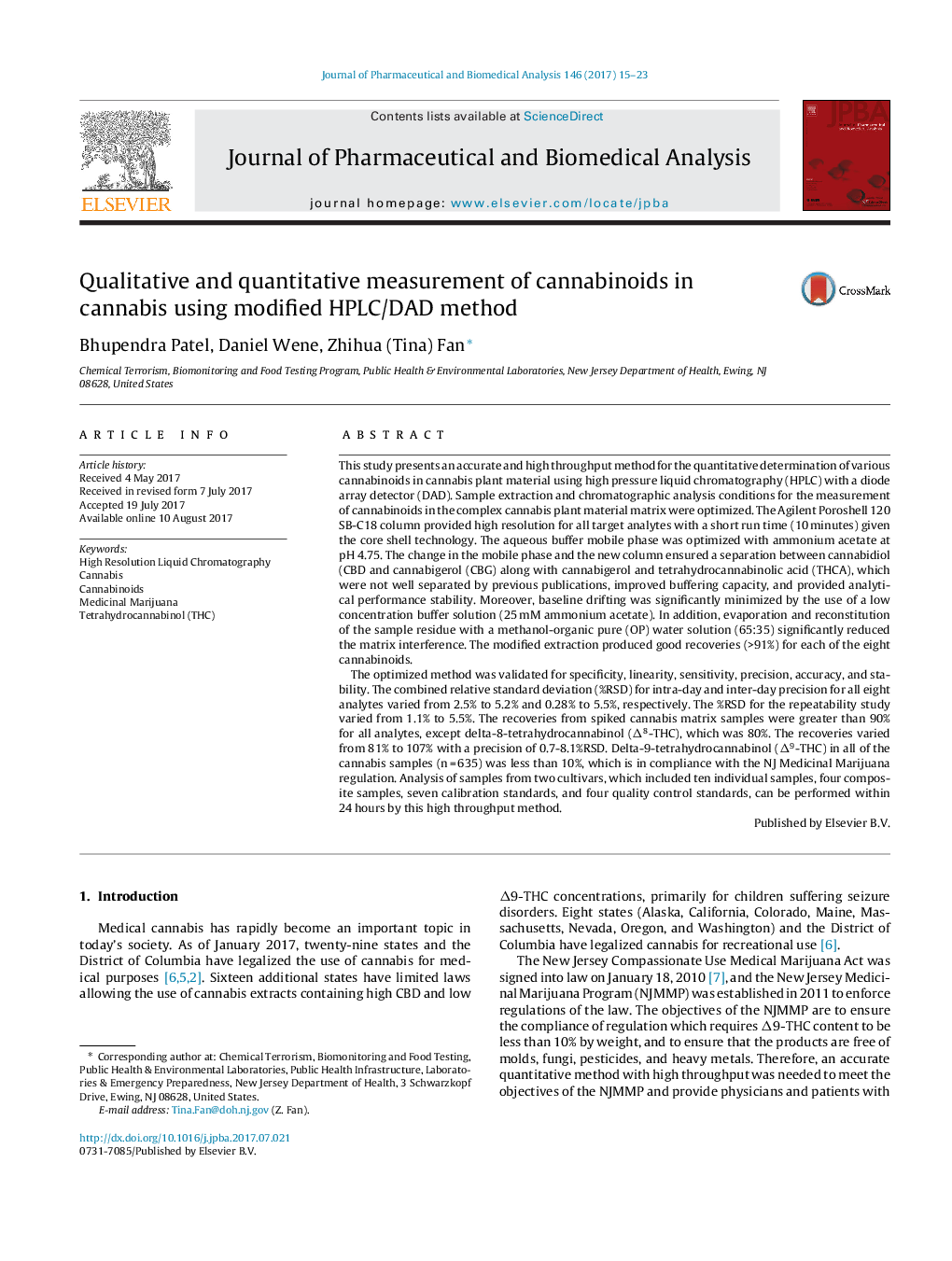| کد مقاله | کد نشریه | سال انتشار | مقاله انگلیسی | نسخه تمام متن |
|---|---|---|---|---|
| 5137876 | 1494589 | 2017 | 9 صفحه PDF | دانلود رایگان |

- A short, sensitive method has been developed for cannabinoids in plant material.
- Separation and instrument stability have been improved by modification of pH.
- Runtime has been shortened to 10Â minutes, over half the runtime of previously published methods.
- Extraction procedures have been improved to produce accurate results.
This study presents an accurate and high throughput method for the quantitative determination of various cannabinoids in cannabis plant material using high pressure liquid chromatography (HPLC) with a diode array detector (DAD). Sample extraction and chromatographic analysis conditions for the measurement of cannabinoids in the complex cannabis plant material matrix were optimized. The Agilent Poroshell 120 SB-C18 column provided high resolution for all target analytes with a short run time (10 minutes) given the core shell technology. The aqueous buffer mobile phase was optimized with ammonium acetate at pH 4.75. The change in the mobile phase and the new column ensured a separation between cannabidiol (CBD and cannabigerol (CBG) along with cannabigerol and tetrahydrocannabinolic acid (THCA), which were not well separated by previous publications, improved buffering capacity, and provided analytical performance stability. Moreover, baseline drifting was significantly minimized by the use of a low concentration buffer solution (25 mM ammonium acetate). In addition, evaporation and reconstitution of the sample residue with a methanol-organic pure (OP) water solution (65:35) significantly reduced the matrix interference. The modified extraction produced good recoveries (>91%) for each of the eight cannabinoids.The optimized method was validated for specificity, linearity, sensitivity, precision, accuracy, and stability. The combined relative standard deviation (%RSD) for intra-day and inter-day precision for all eight analytes varied from 2.5% to 5.2% and 0.28% to 5.5%, respectively. The %RSD for the repeatability study varied from 1.1% to 5.5%. The recoveries from spiked cannabis matrix samples were greater than 90% for all analytes, except delta-8-tetrahydrocannabinol (Î8-THC), which was 80%. The recoveries varied from 81% to 107% with a precision of 0.7-8.1%RSD. Delta-9-tetrahydrocannabinol (Î9-THC) in all of the cannabis samples (n = 635) was less than 10%, which is in compliance with the NJ Medicinal Marijuana regulation. Analysis of samples from two cultivars, which included ten individual samples, four composite samples, seven calibration standards, and four quality control standards, can be performed within 24 hours by this high throughput method.
Journal: Journal of Pharmaceutical and Biomedical Analysis - Volume 146, 30 November 2017, Pages 15-23